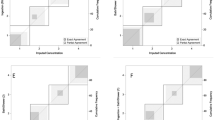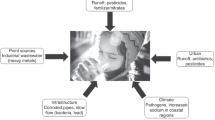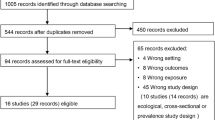Abstract
Studies of disinfection byproducts (DBPs) in drinking water and risk of adverse reproductive outcome have usually relied on approximate measures of exposure. Individual differences in consumption of bottled or filtered water, variability in tap water consumption at home and at work, dermal and inhalation exposure to volatile contaminants, and changes in residency during pregnancy may lead to exposure misclassification. We characterized exposures to tap water and other risk factors among 71 pregnant and 43 non-pregnant women attending public health clinics. Nearly all residences had a municipal water source, but 25% of women drank filtered or bottled water. Fifty percent of the women in our sample reported working outside the home where, on average, one third of their daily water intake took place. Pregnant women consumed more water than non-pregnant women (3.4 vs. 3.0 total l/day), especially cold tap water at home (1.8 vs. 1.3 l/day, 95% CI for the difference=0.1, 0.9). Patterns of showering were similar for both groups of women, but pregnant women were more likely to bathe and to bathe more frequently. The prevalence of smoking was lower among pregnant women (22.5% vs. 32.6%), as was the consumption of alcohol (4.2% vs. 53.5%, 95% CI for the difference=−64.9, −33.7). Thirty-two percent of women had moved during their current pregnancy. The data reaffirm the importance of collecting individual-level data for water consumption and exposure to potential confounders to avoid misclassification bias. This study is the first to target women of low socio-economic status (SES) and therefore of particular interest in studies of adverse reproductive outcomes for which this group is at increased risk.
This is a preview of subscription content, access via your institution
Access options
Subscribe to this journal
Receive 6 print issues and online access
$259.00 per year
only $43.17 per issue
Buy this article
- Purchase on Springer Link
- Instant access to full article PDF
Prices may be subject to local taxes which are calculated during checkout
Similar content being viewed by others
References
Aggazzotti G, Fantuzzi G, Righi E, Tartoni P, Cassinadri T, and Predieri G, Chloroform in alveolar air of individuals attending indoor swimming pools. Arch Environ Health (1993) 48: 250–254
Backer LC Ashley DL Bonin MA Cardinali FL Kieszak SM and Wooten JV, Household exposures to drinking water disinfection by-products: whole blood trihalomethane levels. J Expos Anal Environ Epidemiol (2000) 10: 321–326
Bove FJ Fulcomer MC Klotz JB Esmart J Dufficy EM Savrin JE et al, Public water contamination and birth outcomes. Am J Epidemiol (1995) 141: 50–62
Burmaster DE, Lognormal distributions for total water intake and tap water intake by pregnant and lactating women in the United States. Risk Anal (1998) 18: 215–219
Dodds L, King W, Wolcott C, and Pole J, Trihalomethanes in public water supplies and adverse birth outcomes. Epidemiology (1999) 10: 233–237
Ershow AG Brown LM and Cantor KP, Intake of tap water and total water by pregnant and lactating women. Am J Public Health (1991) 81: 328–334
Gallagher MD Nuckols JR Stallones L and Savitz DA, Exposure to trihalomethanes and adverse pregnancy outcomes. Epidemiology (1998) 9: 484–489
Hopkins SM and Ellis JC, Drinking water consumption in Great Britain Water Research Centre, Marlow, Bucks, 1980, TR 137
Khoury MJ Stewart W Weinstein A Panny S Lindsay P and Eisenberg M, Residential mobility during pregnancy: implications for environmental teratogenesis. J Clin Epidemiol (1988) 41: 15–20
King W, Dodds L, and Allen A, Relation between stillbirth and specific chlorination by-products in public water supplies. Environ Health Perspect (2000) 108: 883–886
Levesque B, Ayotte P, LeBlanc A, Dewailly E, Prudhomme D, Lavoie R, Sylvain A, and Levallois P, Evaluation of dermal and respiratory chloroform exposure in humans. Environ Health Perspect (1994) 102: 1082–1087
Milton SJ, Statistical Methods in the Biological and Health Sciences 3rd ed McGraw-Hill, New York, 1999
Neutra RR Swann SH Hertz-Picciotto I Windham GC Wrensch M Shaw GM Fenster L and Deane M, Potential sources of bias and confounding in environmental epidemiologic studies of pregnancy outcomes. Epidemiology (1992) 3: 134–142
Nieuwenhuijsen MJ Toledano MB Eaton NE Fawell J and Elliott P, Chlorine disinfection by-products in water and their association with adverse reproductive outcomes: a review. J Occup Environ Med (2000) 57: 73–85
Reif JS Hatch MC Bracken M Holmes L Schwetz B and Singer PC, Reproductive and developmental effects of disinfection byproducts in drinking water. Environ Health Perspect (1996) 104: 1056–1061
Shaw GM and Malcoe LH, Residential mobility during pregnancy for mothers of infants with or without congenital cardiac anomalies: a reprint. Arch Environ Health (1992) 47: 236–238
Shimokura GH Savitz DA and Symanski E, Assessment of water use for estimating exposure to tap water. Environ Health Perspect (1998) 106: 55–59
Starfield B Shapiro S Weiss J Liang KY Ra K Paige D and Wang X, Race, family income, and low birth weight. Am J Epidemiol (1991) 134: 1167–1174
Swan SH Waller K Hopkins B Windham G Fenster L Schaefer C and Neutra R, A prospective study of spontaneous abortion; relation to amount and source of drinking water consumed in early pregnancy. Epidemiology (1998) 9: 126–133
Weisel CP and Chen WJ, Exposure to chlorination by-products from hot water uses. Risk Anal (1994): 101–106
Weisel CP and Jo WK, Ingestion, inhalation and dermal exposures to chloroform and trichloroethane from tap water. Environ Health Perspect (1996) 104: 48–51
Weisel CP Kim H Haltmeier P and Klotz JB, Exposure estimates to disinfection by-products of chlorinated drinking water. Environ Health Perspect (1999) 107: 103–110
Acknowledgements
Supported, in part, by a cooperative agreement with the U.S. EPA CR 822107-02-3. The authors thank Dr. Adrienne LeBailly of the Larimer County Department of Health and Environment for assistance in accessing participants.
Author information
Authors and Affiliations
Corresponding author
Rights and permissions
About this article
Cite this article
ZENDER, R., BACHAND, A. & REIF, J. Exposure to tap water during pregnancy. J Expo Sci Environ Epidemiol 11, 224–230 (2001). https://doi.org/10.1038/sj.jea.7500163
Received:
Accepted:
Published:
Issue Date:
DOI: https://doi.org/10.1038/sj.jea.7500163
Keywords
This article is cited by
-
Are there excess fetal deaths attributable to waterborne lead exposure during the Flint Water Crisis? Evidence from bio-kinetic model predictions and Vital Records
Journal of Exposure Science & Environmental Epidemiology (2022)
-
Measurement error in mobile source air pollution exposure estimates due to residential mobility during pregnancy
Journal of Exposure Science & Environmental Epidemiology (2017)
-
Estimating drinking-water ingestion and dermal contact with water in a French population of pregnant women: the EDDS cohort study
Journal of Exposure Science & Environmental Epidemiology (2015)
-
A review of physiological and behavioral changes during pregnancy and lactation: Potential exposure factors and data gaps
Journal of Exposure Science & Environmental Epidemiology (2014)
-
Does area deprivation modify the association between exposure to a nitrate and low-dose atrazine metabolite mixture in drinking water and small for gestational age? A historic cohort study
Environmental Science and Pollution Research (2014)



